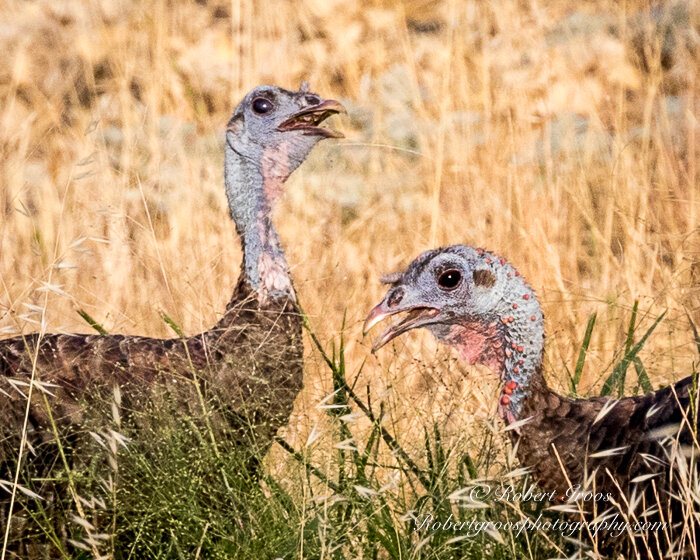Talking turkey
Today, we’re gonna talk turkey. Wild Turkey, that is.
Not the Wild Turkey famously distilled in Kentucky. Rather, this post is about the kind of wild turkey that comes to you covered in feathers.
If you counted all the feathers, you’d be counting for some time. Everyone at the dinner table will have finished their pumpkin pie and left the table to take a nap, or watch a football game. You probably will be still counting, because Wild Turkeys have upwards of 6,000 feathers.
Wild Turkey grooming its feet.
And beautiful feathers they are: iridescent red, purple, and green; metallic gold, bronze, copper. The colors are particularly brilliant when reflected in the sunlight. It’s truly a sight to see.
The Wild Turkey (Meleagris gallopavo) is indigenous to the New World. Turkeys were particularly numerous in the vast forest lands of the eastern parts of America when Englishmen began arriving in the 1600s. Wild Turkeys also roamed the West, but in lesser numbers, and down into Mexico where they were domesticated. By the early 20th century, however, Wild Tturkeys faced extinction due to hunting and loss of habitat. Audubon estimates that conservation efforts have succeeded in increasing the population to around seven million today, but still fewer than when the Pilgrims arrived.
Turkey strutting its stuff.
According to Pilgrim chronicler Edward Winslow, Governor Bradford ordered three days of celebration after their first harvest in 1621. The four men Bradford sent “fowling” returned with sufficient game to last the Company nearly a week, so it is quite possible that wild turkey was on the menu. Turkey was a favorite of the Native Americans.
Wild Turkeys roam the oak woodland foothills of the Sierra Nevada where I live. I’ve seen them from time to time while driving along the roadways, but never close up until last August. My wife called to me excitedly, pointing out a rafter of the birds walking across the front of our property. They returned at random over the course of the month, and then moved on to other pastures.
You would think that a ground bird larger than a goose, four feet tall, and with a six foot wingspan, would be easy to photograph. It's pretty big, after all. Easier said than done. Here’s why:
First, you never know where or when they will appear. My turkeys came in the early morning hours. I would run outside with my camera, wearing who knows what, and try to position myself in a place where I could be in front of them; ideally, with the sun at my back.
Reality set in pretty quickly. Wild Tturkeys, constantly on the move, prefer to have photographers, and other stalkers, behind them, not in front. They also like to forage acorns, lizards, insects, and various seeds in leaf litter under the oak forest canopy; at those times, they are in the shade, which means their feathers don’t shine.
Rafter of turkeys with heads up like a periscope.
To compound the difficulty in photographing them, they have a small head set on top of a long neck connected to a bulbous, densely feathered, 30 lb. body. That tiny head, (alternatively red, white, or blue, depending on the bird’s mood) is at times raised up into the air like a periscope, or stretched out down low deep into the tall grass. It never seems to be on the same plane as the body. Upon what part do you focus, especially when they are on the run, moving at upwards of 20 mph, or flying at 55 mph?
While grooming, Wild Turkeys can contort themselves into all sorts of poses. They occasionally resemble something from a Mr. Potato Head game that children have randomly assembled with disparate parts. At those moments, I can’t refrain from laughing at the wonderful sight before me.
Wishing you all a very Happy Thanksgiving.
p.s. If you are not already on my mailing list and wish to be added for future posts, please send an email to: robertgroos1@gmail.com. Your information will not be shared, and you can unsubscribe at anytime. Thank you.
Wild Turkey with many moving parts.



















